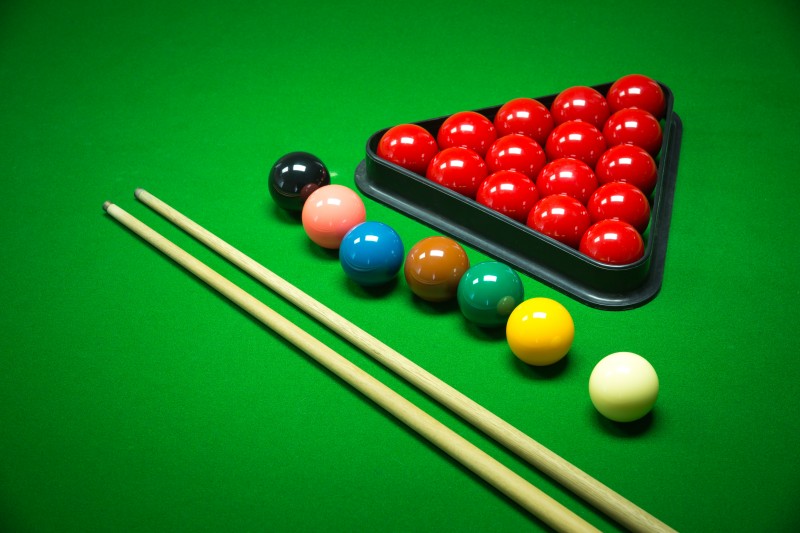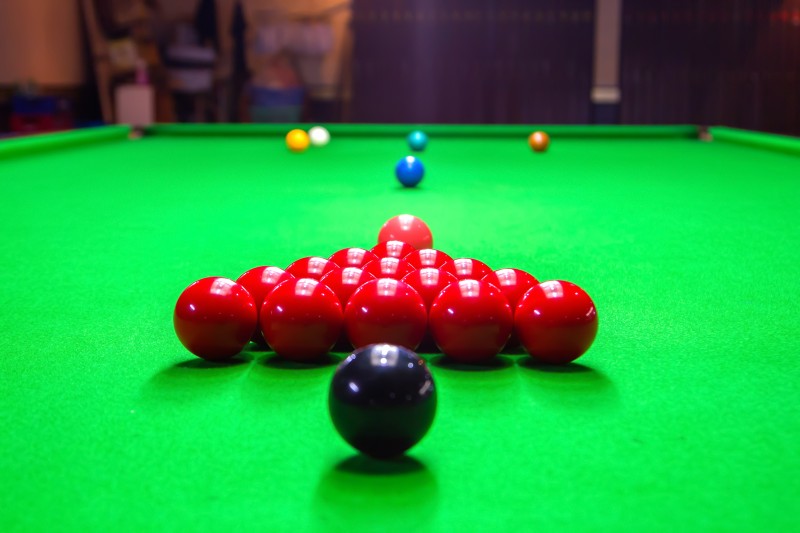The Importance of Proper Table Setup
The game of snooker, rooted deeply in the UK’s sports heritage, has always fascinated enthusiasts and professionals alike. And for those who love it, the snooker table is not just a piece of furniture. It’s a stage, a battleground, a canvas. But, like any masterpiece, the setup is crucial. So, let’s delve into why a flawless snooker table setup is imperative.

Brief History of Snooker and its Prominence in the UK
Originating in the British Army stations in India, snooker soon found its way to the UK, becoming a sensation. Today, it’s not just a game; it’s a testament to precision, skill, and strategy.
Why it Enhances Playing Experience
Every snooker player, whether a novice or a seasoned pro, knows the thrill of a perfect shot. But that magic often relies on more than just skill. The table itself plays a vital role. Here’s why:
- Accuracy: A well-set table ensures that the balls roll straight and true.
- Consistency: Proper setup means each shot behaves as expected, leveling the playing field.
- Longevity: Taking the time to set up correctly safeguards the table’s lifespan, ensuring years of enjoyable play.
A snooker table is much more than its green surface and pockets. Every component, from the cushions to the legs, plays a role in the overall playing experience. And to guarantee a seamless game, attention to detail during the setup is paramount.
Key Differences Between Snooker and Pool Tables
While they might appear similar to the untrained eye, snooker and pool tables differ significantly:
- Size: Snooker tables are generally larger.
- Ball Count: Snooker uses more balls, including 15 reds.
To wrap up this introduction, remember that the essence of a great game of snooker doesn’t solely rest on the players. An impeccable snooker table setup, combined with the sport’s rich history, sets the stage for a memorable game every time. So, as you embark on your snooker journey, always give due importance to the table’s setup, and the game will indeed reward you.
Understanding the Components

Dive beneath the green cloth of a snooker table, and you’ll discover a complex world of craftsmanship and design. Every element has been crafted to enhance the game, turning a simple board into an arena of skill and precision. For those keen on mastering snooker table setup, understanding these components is the first step.
The Difference Between Pool and Snooker Tables
At a casual glance, one might think a pool table and a snooker table are interchangeable. However, discerning players and aficionados know the nuances:
- Design: Snooker tables often have tighter pockets, challenging players to be more precise.
- Cloth Texture: The baize on a snooker table is typically smoother, influencing ball speed and trajectory.
Key Parts of a Snooker Table
A snooker table is an ensemble of meticulously designed parts. While each is vital, certain components significantly influence the game:
- Bed: Typically made of slate, it’s the foundation ensuring a level playing field.
- Cushions: These rubber boundaries affect ball rebound and playability.
- Pockets: Crucial to the game, their size and cut can alter a player’s strategy.
- Rails: Providing support to the cushions, they’re essential for a stable table setup.
The Importance of Quality Balls and Cues
Beyond the table, the balls and cues hold paramount importance in the game. Here’s why:
- Material and Weight: Quality balls ensure consistent rolls, bounces, and collisions.
- Tip Quality: A cue’s tip affects the player’s ability to execute spins and other advanced shots.
In essence, a snooker table is a sum of its parts, each working in harmony. From the expansive bed to the minuscule cue tip, every component plays its role in shaping the game. As you delve deeper into the world of snooker table setup, remember: understanding these intricacies is your first stride towards perfection.
Step-by-step Guide
As someone passionate about snooker, I can’t stress enough how pivotal a perfectly set up table is to the game’s quality. Every cue strike, every ball roll, is influenced by how you prepare the table. Let’s embark on this enlightening journey to perfect your snooker table setup.
Choosing the Right Location
Selecting the perfect spot for your snooker table can dramatically enhance the playing experience. It’s not just about fitting the table into a room; it’s about considering the players’ movements and ensuring ample room for strokes. Furthermore, lighting plays an integral role. Aim for even lighting across the table, ensuring no part remains in shadow or under excessive glare.
Levelling the Table
A leveled table is the foundation of a fair game. Imagine playing on a surface that slightly tilts; the ball’s trajectory can change, favoring one side. To avoid this, use a spirit level to check the evenness. Many modern tables come equipped with adjustable legs, allowing you to fine-tune the table’s height and level with precision.
Laying the Cloth
The cloth, often referred to as the baize, provides the playground for the balls. It’s crucial to ensure its smoothness, laying it out meticulously to prevent wrinkles or bubbles. Remember to always lay the cloth from the baulk end, maintaining the nap’s direction for a consistent ball roll. A slate bed snooker table is the best type of table.
Positioning the Cushions and Rails
The cushions and rails dictate the ball’s rebound dynamics. It’s essential to align the cushions perfectly with the table edges, ensuring each bounce is predictable and consistent. Additionally, securing the rails properly prevents any unforeseen movement, further ensuring a standardized playing field.
Pocket Alignment and Care
Where the game’s points are scored, the pockets, demand your attention. Proper pocket care and alignment are vital for a fair game.
- Ensure the pockets are of a consistent size and cut, challenging yet fair.
- Regularly inspect for wear and tear, maintaining their integrity and ensuring they remain consistent throughout.
To conclude, the art of snooker table setup is a journey through minute details. By ensuring every component, from the location to the pockets, is optimized, you set the stage for a game that’s not only fun but also fair and competitive.
Essential Maintenance Tips for Long-lasting Playability
There’s an adage in the snooker world: treat your table right, and it’ll reward you with countless hours of impeccable gameplay. Ensuring its longevity and maintaining its pristine playing condition is more than a chore; it’s a commitment to the game. As a snooker table specialist, I’ve seen how routine care can significantly extend a table’s life, so let’s delve into the essentials.
Cleaning and Caring for the Table Surface
The table surface, that beautiful expanse of green, demands your utmost care. Dust, chalk residue, and accidental spills can quickly mar its perfection. Here’s my advice:
– **Regular Dusting:** Use a specialized brush, moving in the direction of the nap to keep the surface smooth.
– **Spot Cleaning:** For accidental spills, blot—don’t rub. Use a damp cloth and ensure to dry the area thoroughly.
– **Protective Covers:** When not in use, a protective cover can shield the surface from dust and accidental spills.
Routine Checks for Wear and Tear
Even with the best snooker table setup, wear and tear are inevitable. The key is catching potential issues early. Regularly inspect the cloth for signs of thinning or damage. Examine the cushion’s responsiveness; a dead cushion can dramatically alter gameplay. And don’t forget to check pockets for any loose netting or fraying.
The Significance of Humidity and Temperature
Your snooker table isn’t just wood, slate, and cloth; it’s a finely-tuned instrument sensitive to its environment. Fluctuations in humidity and temperature can have profound effects.
- Humidity: Excessive moisture can warp the wood and dampen the cloth, affecting ball roll.
- Temperature: Extreme cold or heat can stretch or shrink the cloth, potentially leading to wrinkles or slackness.
Investing in a dehumidifier or room heater can help maintain consistent conditions. If you’re truly dedicated, consider placing a hygrometer in the room to monitor humidity levels actively.
In the realm of snooker, the table is your arena. Just as a musician cares for their instrument, or an artist for their tools, so too should the snooker enthusiast care for their table. By adopting these maintenance tips, not only do you preserve the table’s quality and playability, but you also honor the game itself.
Myths and Misconceptions About Setting up a Snooker Table
In my time as a snooker table specialist, I’ve encountered a plethora of myths surrounding the art of snooker table setup. Some of these misconceptions, if acted upon, can do more harm than good. Let’s debunk a few of the most common myths and bring clarity to this intricate process.
Any Flat Surface Can Double as a Snooker Table
It’s tempting to think that any large, flat surface can be transformed into a snooker haven. However, a snooker table is a marvel of engineering precision. The type of wood, the slate’s quality, the cushion’s responsiveness—all play a crucial role in the game’s dynamics. Simply put, there’s more to a snooker table than meets the eye.
Re-clothing a Table is a DIY Task
While there’s a wealth of DIY information available online, re-clothing a snooker table isn’t as straightforward as it might appear. The process requires exact measurements, specific tools, and a keen understanding of the nap’s direction. One minor error, and you might find yourself with an uneven playing surface or bubbles on the cloth, greatly affecting the game.
Tighter Pockets Make for a More Challenging Game
It’s a commonly held belief that tighter pockets equate to a more challenging game. However, there’s a fine line between challenge and frustration. Pockets designed with precision ensure that the game remains fair, demanding skill without bordering on the impossible.
A Table’s Age Dictates Its Quality
Many purport that older tables, with their seasoned woods and historical charm, offer superior gameplay. While there’s no denying the allure of an antique table, age doesn’t always equate to quality. Modern tables, crafted with cutting-edge techniques and materials, can provide unparalleled playability.
- Performance Matters: The game’s quality is more about the table’s maintenance and setup than its age.
- Innovation is Key: Contemporary table designs often incorporate improvements, addressing traditional design flaws.
Regular Maintenance Is Unnecessary
The belief that once set up, a snooker table requires minimal maintenance is a myth that can shorten a table’s lifespan dramatically. Regular care, from cleaning the cloth to inspecting the cushions, ensures the table remains in top form, offering a consistent playing experience.
In the world of snooker, misinformation can easily lead one astray. By dispelling these myths, not only do we safeguard our beloved tables, but we also elevate the game itself, ensuring each shot, each break, and each frame is played under the best possible conditions.
For further advice on Snooker Tables contact me at IQ Pool Tables or call 0161 494 8485
